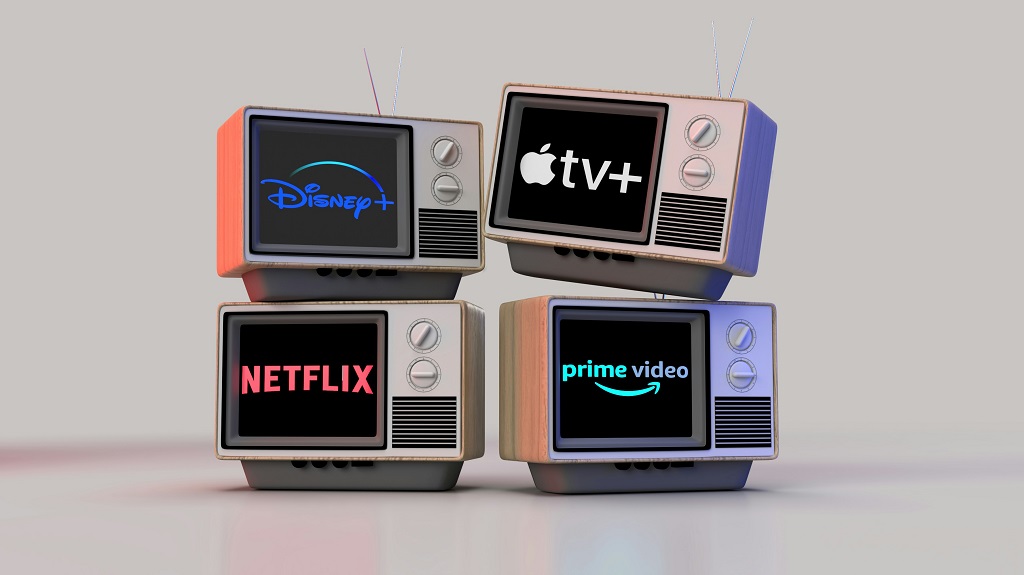Scroll through any app store today and it’s impossible to miss the dominance of video. From Netflix binges to Twitch streams to short TikTok clips, audiences now expect content to be available live or on demand, anytime, anywhere. This shift has turned video streaming app development into one of the most active fields in tech.
The numbers are staggering. Analysts estimate that the global video streaming market has already crossed $230 billion in annual revenue in 2024 and is still climbing, with growth fueled by mobile devices, remote work, and the explosion of creator-driven platforms. Businesses from media giants to fitness coaches are investing in custom apps to control their own distribution, monetize audiences directly, and avoid being trapped by the limits of third-party platforms.
This guide breaks down everything you need to know: how the streaming services market works, what features define a strong app, examples of the biggest players, what development actually costs, and the exact steps to follow if you want to launch your own service. Toward the end, we’ll also explore how Scrile Stream helps companies and creators build fully branded apps that don’t compromise on ownership or scalability.
The Streaming Services Market
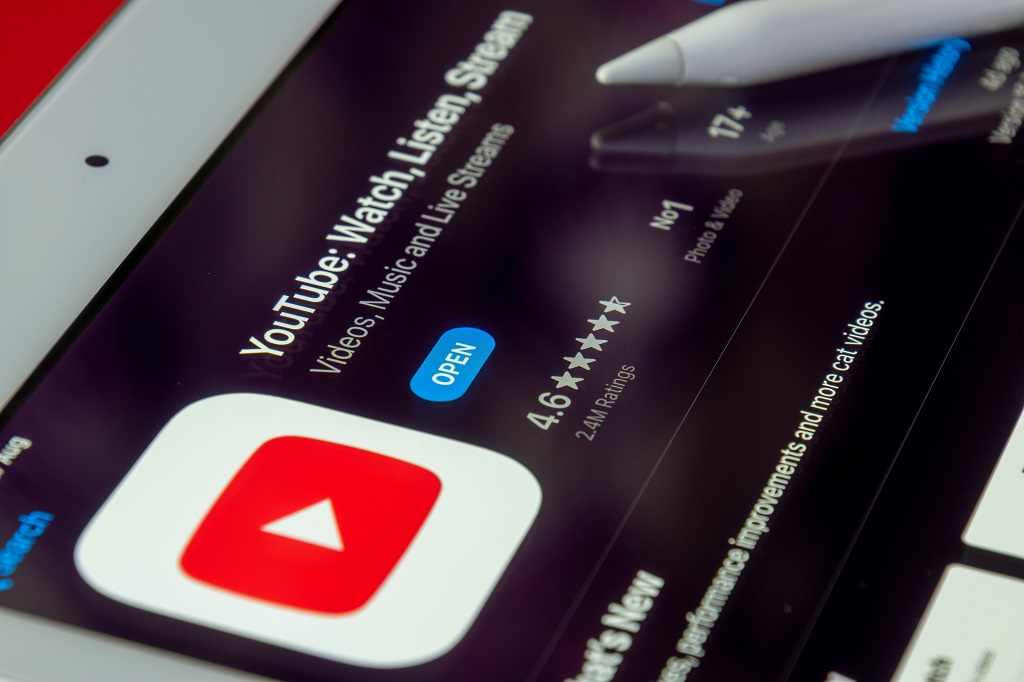
Video is no longer just another type of content — it’s the default format for entertainment, news, and even day-to-day communication. From billion-dollar OTT giants like Netflix and YouTube Live to niche platforms dedicated to yoga, language learning, or gaming, streaming has carved out space in every corner of the internet. Industry reports put growth in double digits year over year, and while the headlines usually focus on Hollywood, the most interesting momentum often comes from much smaller players.
One big reason for this surge is the shift to mobile. The phone has become the first screen for younger audiences, which is why video streaming mobile app development has become a core priority for companies trying to capture attention. A polished mobile app is often the difference between a service people try once and one that becomes part of their daily routine.
At the same time, niches are thriving. You don’t need a library of ten thousand titles if you can deliver the right kind of community. A streaming app built for Spanish-language films, for live music sessions, or for regional sports can grow faster than yet another generic “all-you-can-watch” catalog.
Streaming Trends to Watch in 2025

The way people watch video is evolving quickly. Developers and businesses moving into streaming this year are paying attention to a few standout directions:
- Live commerce — Imagine QVC, but rebuilt for the digital age. Influencers and retailers now host live shows where viewers can ask questions and purchase products instantly without leaving the stream.
- Fitness platforms — From Peloton to small trainers running live Zoom-style workouts, exercise has become one of the strongest niches in streaming. Apps that add features like leaderboards or real-time encouragement see higher retention.
- Education hubs — Video is now central to how we learn. Universities broadcast lectures, startups sell micro-courses, and even schools rely on video libraries. The mix of live sessions and on-demand access has become standard.
- Regional streaming apps — In markets like India, Nigeria, and Latin America, services built around local languages and culture are outperforming some global competitors. Localization isn’t just a feature — it’s the business model.
- Creator-owned platforms — Tired of algorithms and ad revenue swings, many creators are building their own branded apps. It gives them direct control over their audience and revenue streams.
- Adult video streaming apps — The adult industry has always been an early adopter of streaming technology. Platforms that combine pay-per-view, subscriptions, and live interaction continue to generate billions annually. These services rely heavily on privacy tools, secure billing, and moderation features to maintain user trust while handling massive volumes of traffic.
Key Features Every Streaming App Needs
Building a streaming service isn’t just about uploading videos. The app has to deliver a smooth experience, keep users engaged, and give businesses room to grow. Successful video and streaming app development always starts with a clear set of core features that can later be expanded.
Core essentials:
- Reliable video player — fast load times, adaptive quality, and full-screen support are non-negotiable. The player is the heart of the service, and even minor glitches can push viewers away.
- Subscriptions and paywalls — recurring memberships, one-time purchases, or hybrid plans give creators flexible monetization options.
- Chat functions — live chat during events or comment threads under VOD content build a sense of community.
Engagement tools:
- Reactions and polls — viewers like having quick ways to interact without breaking focus. Polls are especially effective during live sessions.
- Community features — groups, forums, or even watch parties keep people returning long after the stream ends.
Advanced functions:
- AI recommendations — personalized content suggestions improve watch time and reduce churn.
- Multi-device synchronization — users expect to start watching on a laptop and finish on a phone without losing progress.
These features form the foundation of any modern streaming app. Adding them early makes the difference between a product people test once and a platform that becomes part of their daily habits.
Examples of Popular Solutions
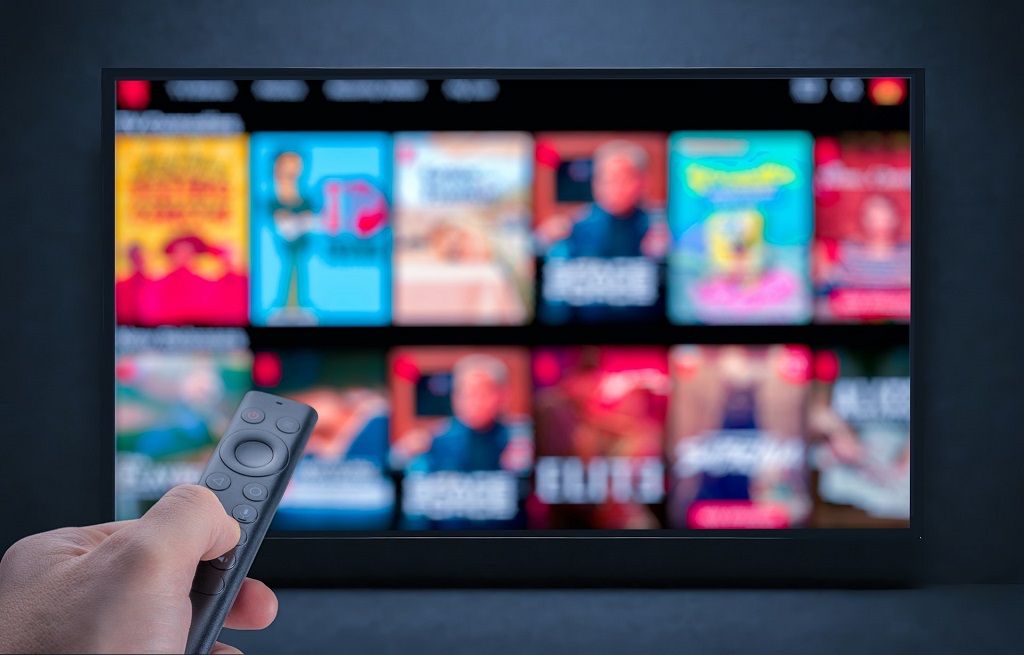
When people talk about streaming, a few names come up immediately. Netflix dominates on-demand viewing with a library that seems endless, but its real strength is how it guides you to the next show before you even think about closing the app. Disney+ didn’t try to compete on volume. Instead, it built its service around a handful of massive franchises, and that gamble worked. Families know exactly what they’re paying for.
In the live streaming world, Twitch set the standard. It isn’t just video; it’s the constant scroll of chat, the streamers reacting in real time, and the feeling that you’re part of a crowd. YouTube Live leans on Google’s infrastructure to handle anything from a wedding streamed to a few dozen relatives to a global press conference with millions watching at once.
And then there are sectors outside of mainstream entertainment. Adult platforms account for some of the highest web traffic anywhere online, and they’ve pushed technical innovation for years — payment models, adaptive video, even early mobile streaming. Fitness services turn workouts into interactive classes with live feedback and leaderboards. Religious organizations have created streaming hubs to keep congregations connected, especially for those who can’t attend in person.
The examples are different, but the point is clear: successful platforms understand their audience and design around those needs, whether that’s blockbuster films, social interaction, or community-driven content.
Step-by-Step Development Guide
Building a streaming service isn’t guesswork. The projects that succeed usually follow a clear process. Skipping steps almost always leads to higher costs later, broken features, or an app that people abandon after the first try. This section lays out the stages of video streaming app development, from the first brainstorm to launching a live product.
Step 1: Define Your Audience & Choose a Hosting Platform

Any serious attempt at video streaming app development begins with a clear picture of the audience. Who do you want to serve? A fitness startup has different needs than an esports community, just as a classroom app is structured differently from an adult-oriented platform. Audience profiles determine design, features, and even how strict your moderation will be.
Alongside this, you need to lock in a hosting platform. Streaming eats bandwidth, and the wrong choice here can lead to buffering, crashes, or sky-high bills. Founders typically evaluate three main routes:
- Cloud hosting (AWS, Google Cloud, Azure): Great for scaling quickly, paying only for what you use, and tapping into global data centers.
- Dedicated servers: Higher upfront costs, but more predictable performance and control — often chosen by apps with steady, heavy traffic.
- Hybrid hosting: A mix of both. Start small in the cloud, then move heavy operations onto dedicated machines once traffic stabilizes.
Getting these two elements right from the beginning saves money and avoids painful migrations later. It also frames the rest of your development roadmap, since your infrastructure limits what you can build on top.
Step 2: Design UI/UX
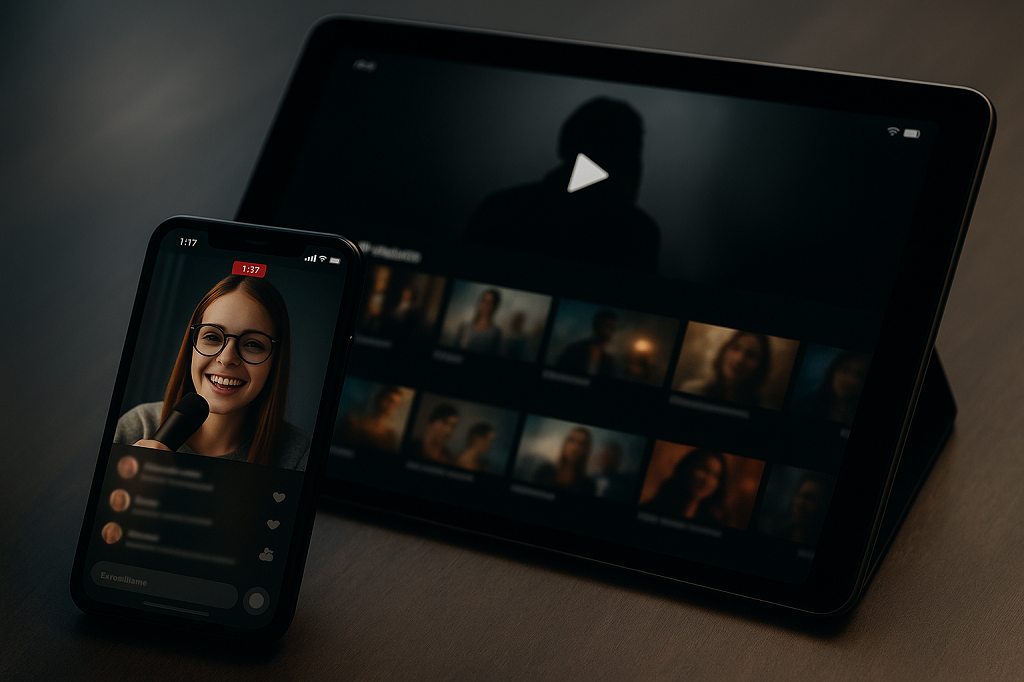
After sorting out your hosting and audience, the next challenge is the interface. People don’t download a streaming app because it’s “innovative.” They download it because it’s easy, fast, and feels natural from the first tap.
Start with the basics: the player. If users have to search for the play button, you’ve already lost them. Menus should be obvious, subscriptions simple to manage, and search powerful enough to actually find things. Think Netflix simplicity, not a maze of hidden options.
A few design decisions that usually separate winners from throwaways:
- Personalization that suggests shows or streams without being creepy.
- Subscription buttons that are impossible to miss and easy to cancel.
- Lightweight interaction — chats, likes, reactions — so people feel connected instead of isolated.
This stage of video streaming app development often gets underestimated. Yet design is what most users will judge first. The smoother the flow, the more likely they’ll stay for a second show or a longer session.
Step 3: Develop Core Features

Now comes the heavy lifting — the features that actually make your app worth using. A streaming service is more than a video player wrapped in an app shell. It’s the ecosystem around that player.
At the center sits the video player itself. It has to handle different formats, adjust quality on the fly when bandwidth dips, and keep latency low enough for live sessions. From there, you add the tools that define how people interact and pay:
- Subscriptions and paywalls that are flexible enough for monthly plans, bundles, or even one-off passes.
- Community features such as chat, comments, or polls, because watching alone doesn’t keep users engaged for long.
- Cross-device syncing, so a movie started on a laptop continues seamlessly on a phone or smart TV.
Each of these touches plays into retention. Core features are not about stacking extras — they’re about building a product people trust to work every time they press play. And in streaming, reliability is everything.
Step 4: Integrate Payments, Security & Launch
The last phase ties everything together. Once features are running smoothly, you need to make sure people can pay, their data is safe, and the system can handle real-world pressure. This is the stage where many projects stumble — skipping details that later cause chaos.
Payments come first. Viewers expect familiar names like Stripe or PayPal, but in global markets, you’ll also want credit card processors, crypto gateways, or services like CCBill for adult content. The more options you give, the easier it is to convert free users into paying subscribers.
Security is next. Streaming isn’t just about delivering video; it’s about protecting it. Content leaks, stolen logins, or hacked databases can ruin trust overnight. Adding DRM, encrypted streams, and fraud detection early is far cheaper than fixing problems later.
Finally, launch. Don’t throw it open to the world right away. Run a closed beta, stress-test the servers, and watch how the app behaves under real use. That’s when you’ll find the weak spots. Only after this cycle should you roll out to a bigger audience.
Handled well, this last step transforms a working prototype into a real business.
How Much Does Development Cost?

Budgets for streaming apps vary widely, and the gap between a simple test product and a full commercial platform is enormous. What drives the cost most is the feature list. A barebones app that only plays videos and charges a subscription has a very different price tag from one with live chat, recommendation engines, and support for thousands of concurrent users.
The technology stack adds another layer. Using cloud infrastructure with built-in streaming tools can lower some costs, but fees build up quickly as traffic grows. Choosing the right protocol matters too. RTMP is cheap to start with but needs conversion for broad delivery. HLS works almost everywhere but adds latency. WebRTC gives low delay but requires more engineering. Each option carries its own price implications.
Location of the team is another factor. Developers in North America or Western Europe are expensive, while teams in Eastern Europe or South Asia usually quote less for the same workload. That doesn’t always mean lower quality, but it does change the overall budget planning.
Then come the costs that people often underestimate. Content delivery networks (CDNs) charge per gigabyte, which means a viral event can multiply monthly bills overnight. Security licenses, DRM, and payment integrations all add line items. And beyond tech, there’s the ongoing cost of people: moderators, support staff, and engineers who keep the service stable.
For a rough frame: an MVP with limited features can sit between $30,000 and $70,000. Adding interactivity and global reliability easily moves the figure past $100,000. Large-scale platforms can cost several times more. What matters is aligning ambitions with resources before development starts.
Launch a Turnkey Streaming Service
The quickest way to enter the streaming market is to use a SaaS platform. It gets you online fast, with hosting, billing, and a basic video player already set up. That’s why many creators and small businesses choose this path first. But convenience comes at a price. Features are limited, customization is shallow, and revenue shares or monthly fees keep eating into profits.
Over time, these limits push businesses to look for more control. That’s where white-label and custom builds become attractive. Instead of renting someone else’s platform, companies work with a video streaming app development company or a dedicated dev team to create software that reflects their brand, supports unique features, and scales without hidden restrictions.
SaaS vs Custom Build Comparison Table:
| Approach | Pros | Cons | Best For |
| SaaS turnkey | Fast launch, lower upfront cost | Limited features, revenue share, weak branding | Small creators, early pilots |
| Custom build | Full ownership, scalable, no hidden fees | Higher upfront cost, longer delivery time | Businesses, startups, enterprises |
Scrile Stream: Custom Video Streaming Development
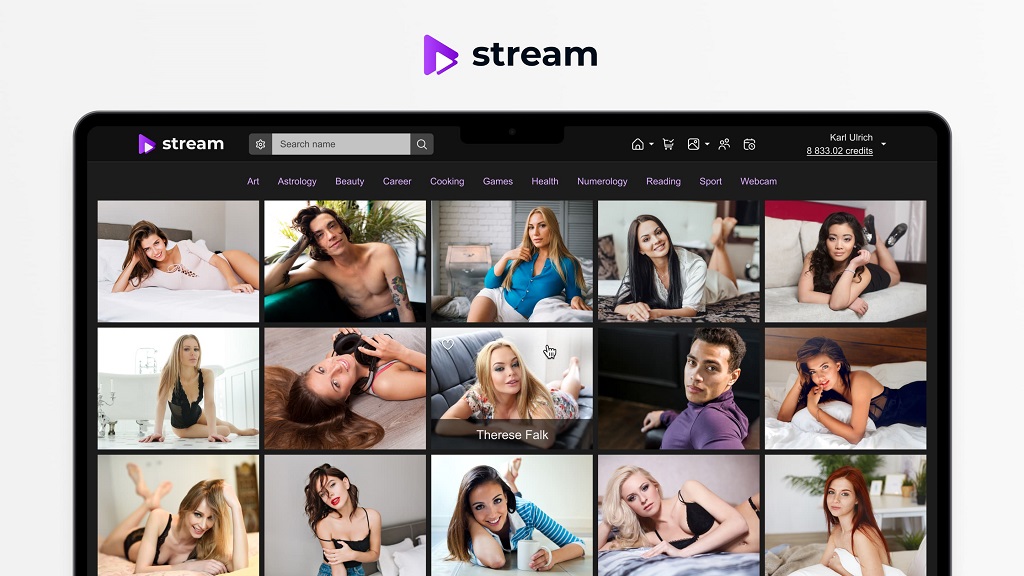
Most companies begin with templates or SaaS platforms, but sooner or later the limits show up. Branding looks generic, revenue is shared with the provider, and scaling costs more than expected. Scrile Stream exists to solve those problems. It’s not a one-size-fits-all product. It’s a development service that builds streaming apps from the ground up, giving businesses full ownership.
The difference shows in the details. Every app is designed around the client’s brand identity and audience needs. That includes the interface, the monetization logic, and even the security stack. Companies that work with Scrile avoid the problem of patching together plugins or settling for half-finished features.
What You Actually Get
Scrile Stream delivers more than a video player. Teams building with it get access to:
- Monetization freedom — subscriptions, tips, pay-per-view, all without platform commissions.
- White-label branding — design reflects your brand, not someone else’s.
- Secure payment options — Stripe, crypto, and CCBill integration ready for global markets.
- AI and chat integrations — keep viewers engaged with smart recommendations and real-time interaction.
- Scalable architecture — a setup that works for both startups and enterprises.
- Adult-content-friendly features — designed to support teams building in the adult industry alongside mainstream use cases.
Support is part of the package too. Scrile assigns a project manager to every build, provides 24/7 technical help after launch, and even includes referral systems to help drive organic growth.
Working with Scrile Stream means treating video streaming app development as a long-term asset instead of a rented service. For businesses serious about owning their platform, it offers a clear path: from idea, to design, to a functioning app that’s built to last.
Conclusion
Video has become the backbone of digital media, and the appetite for streaming apps shows no sign of slowing down. From global giants like Netflix and Twitch to niche services built around fitness, education, or adult content, the market keeps expanding and fragmenting at the same time. That growth creates opportunity, but it also makes the bar for success higher. Users expect smooth playback, polished design, and a sense of community from day one.
Successful are those who think of streaming as a product they own, not a borrowed element of yet another platform. Off-the-shelf software is good for piloting a concept, but scaling a service, securing revenue, and standing apart demand being in complete control of design, functionality, and infrastructure.
That’s where Scrile Stream comes in. It provides businesses with fully customized development, white-label branding, secure payments, and round-the-clock support. If you’re ready to take streaming seriously, reach out to the Scrile Stream team today and start building a platform that’s entirely yours.
FAQ
How long does video streaming app development take?
A basic MVP may be finished in 3–4 months. Complex builds with live chat, payments, and global scaling often need 6 months or more.
What’s the average cost of a video streaming app?
Budgets usually start at $30,000–$70,000 for simple apps and exceed $100,000 for advanced platforms. Ongoing expenses for hosting, content delivery, and moderation must also be planned. Smart video streaming app development keeps these costs under control.
Can small businesses launch their own streaming service?
Yes. Niche apps in fitness, education, and entertainment show that smaller teams can thrive if they focus on a clear audience and choose flexible custom builds.

Polina Yan is a Technical Writer and Product Marketing Manager, specializing in helping creators launch personalized content monetization platforms. With over five years of experience writing and promoting content, Polina covers topics such as content monetization, social media strategies, digital marketing, and online business in adult industry. Her work empowers online entrepreneurs and creators to navigate the digital world with confidence and achieve their goals.

